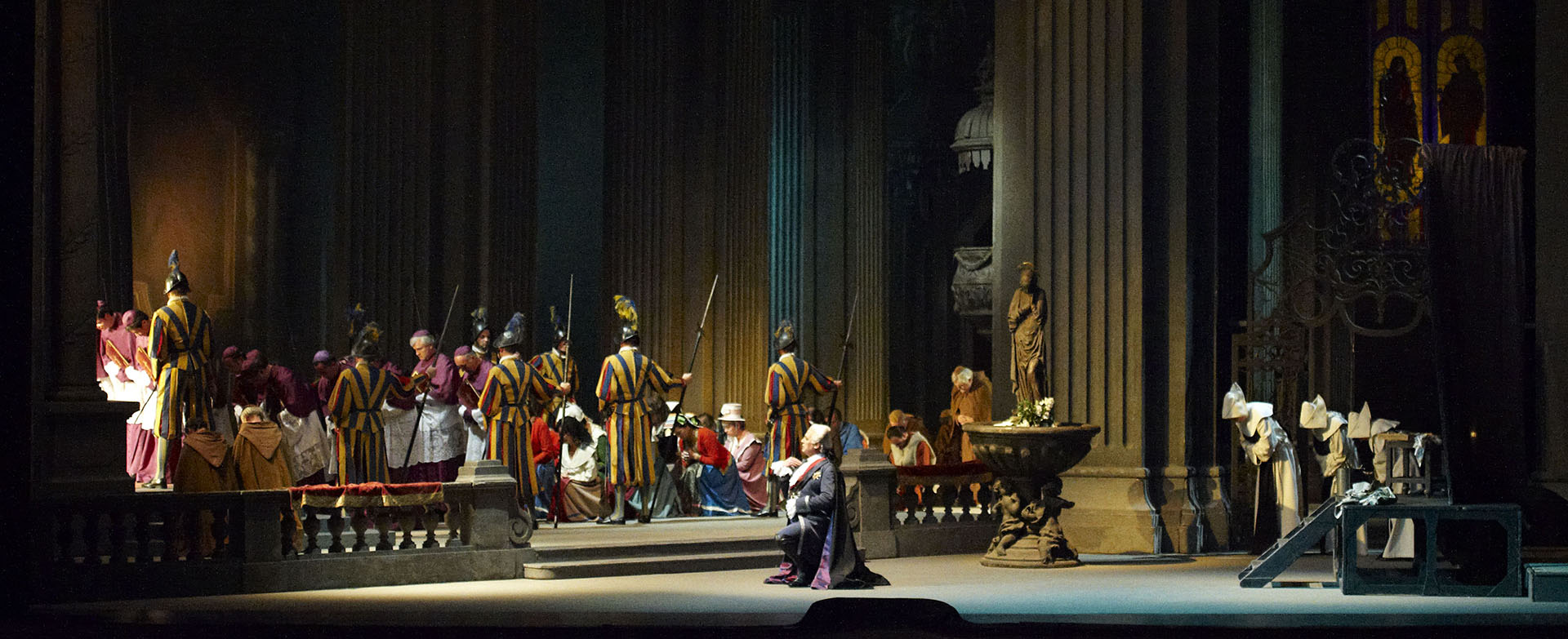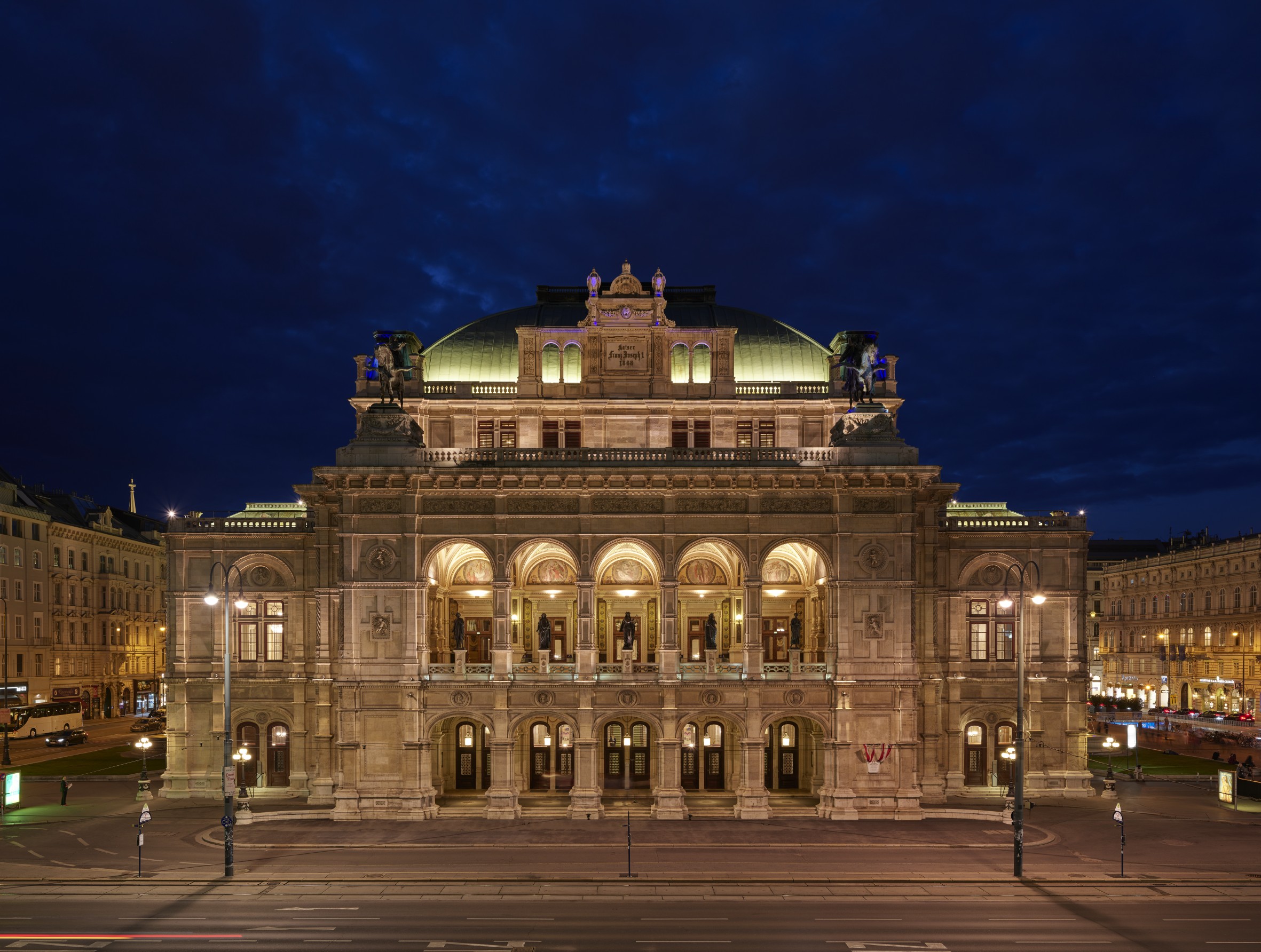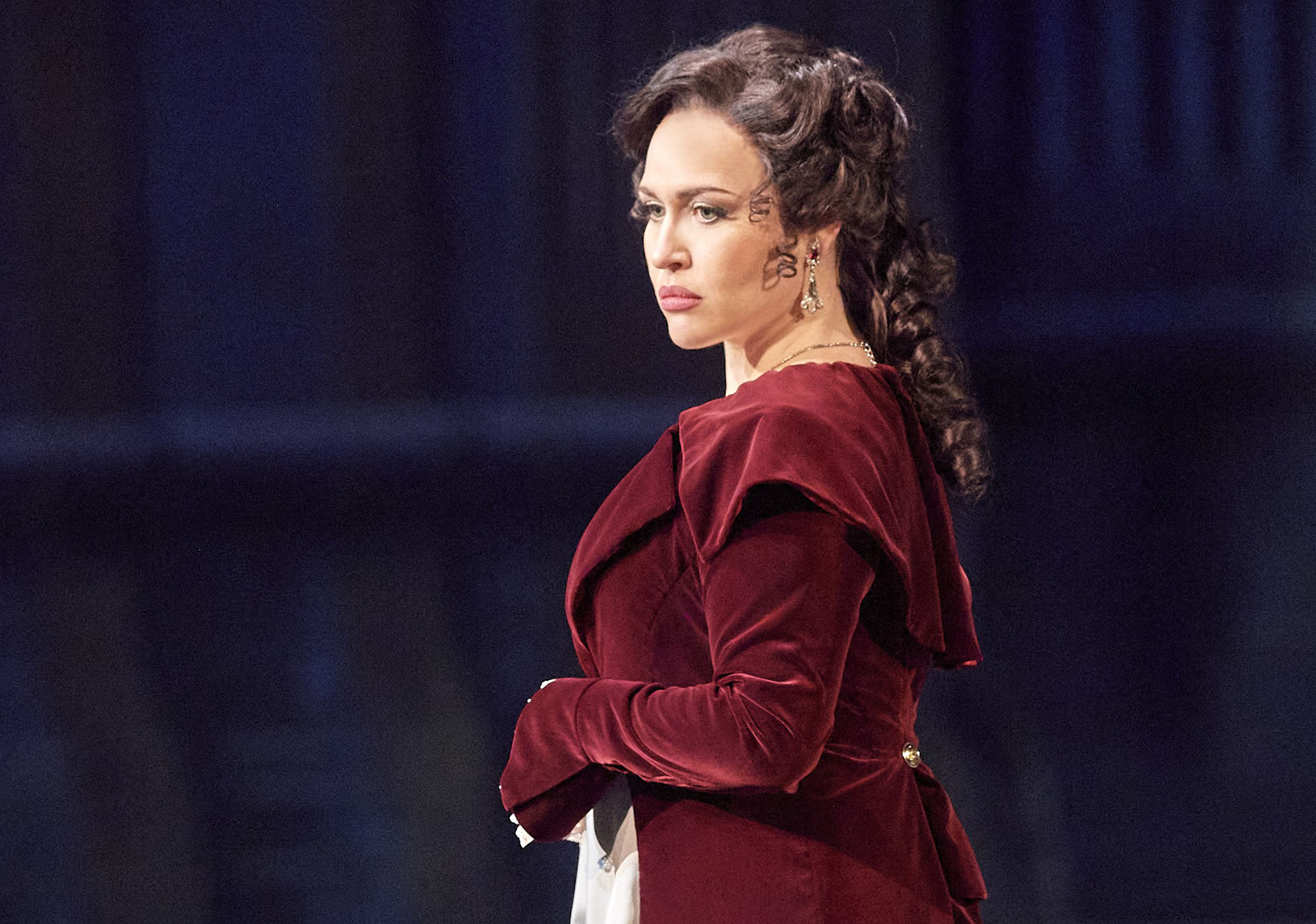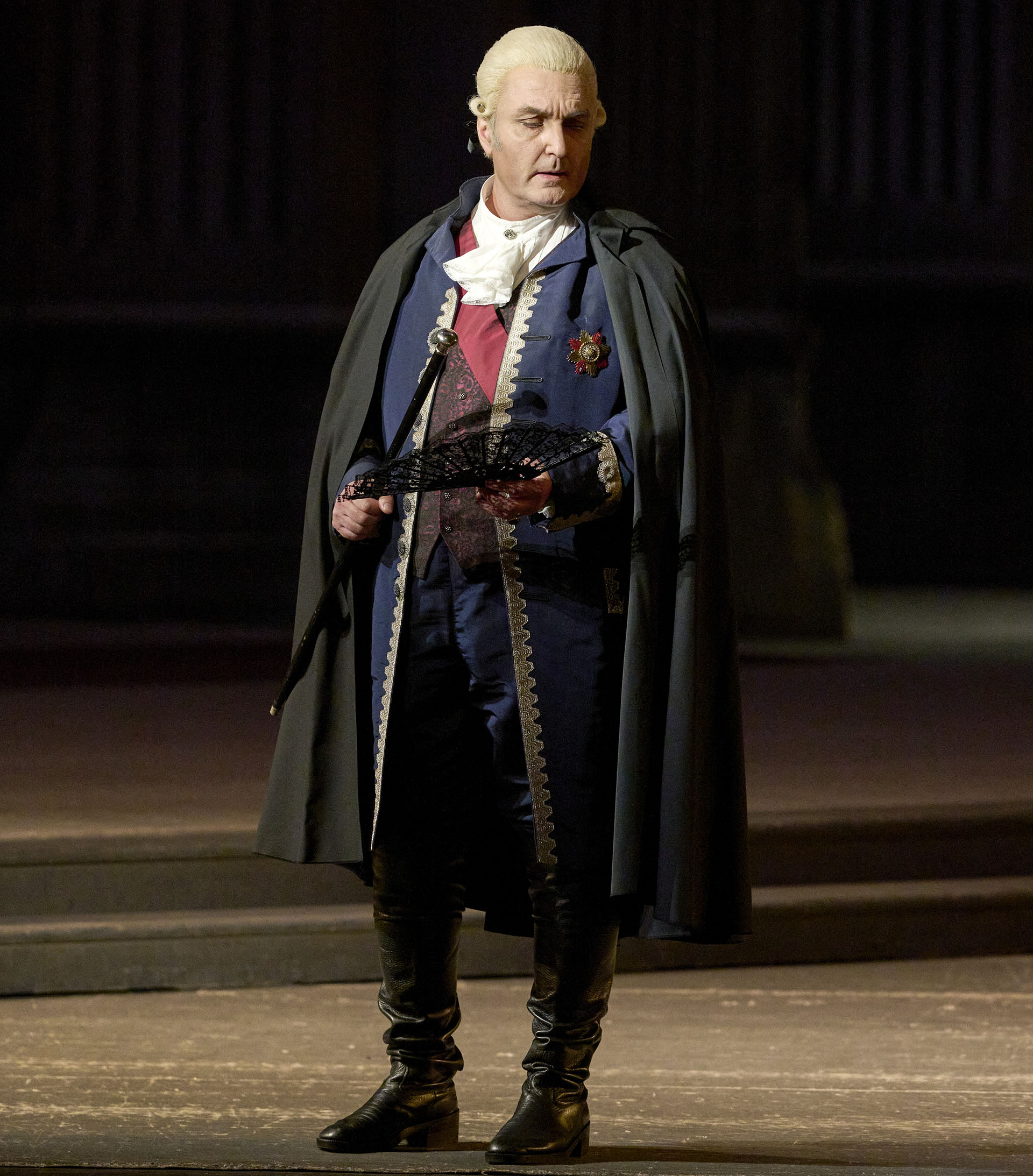 “Tosca” on Your Feet – Not All That Glitters Is Gold
“Tosca” on Your Feet – Not All That Glitters Is Gold
The main purpose of my trip to the Vienna Staatsoper was to hear tenor Jonathan Tetelman in his debut as Cavaradossi. He was partnered by Elena Stikhina in the title role and Ludovic Tézier as Baron Scarpia. Tickets had been sold out for a long time – neither pleading emails to the box office nor the intervention of Viennese friends helped. But I was determined to see this particular “Tosca,” and—just as I had done some years ago – I decided to fight for a… standing-room ticket.
I spent the entire day trying to “sit up for later,” but my wandering nature eventually prevailed. So I set out for a walk around the old town, which – as often happens – ended at Trześniewski’s, with the famous sandwiches, of course accompanied by a glass of Sekt. The small establishment, founded in 1902 by a Pole, Franciszek Trześniewski, sits in the very heart of Vienna on Dorotheergasse, opposite the legendary Café Hawelka. His tiny open-faced sandwiches on dark bread – “unspeakably good” -are served in dozens of flavours and taste best with a miniature mug of beer called Pfiff or a glass of sparkling wine. The founder’s surname, too difficult for Austrians to pronounce, inspired the brand’s famous slogan: “Unspeakably good.” Although the brand now belongs to the Demmer company and has expanded into a network of Viennese outlets, the authentic taste and atmosphere are still best preserved in that first, historic location.
While enjoying those tiny delights, I checked the cast list on the opera’s website. Fortunately, nothing had changed. Tetelman’s debut in “Tosca” had been announced on the main page of the Wiener Staatsoper as one of September’s most anticipated events. No wonder I couldn’t wait. I had already seen this staging before, but this time the main attraction was the cast. The production, directed by Margarethe Wallmann, is a dream come true for lovers of classicism and tradition. Its premiere took place in 1958, and ever since – over sixty-seven years – it has remained in the repertoire as a historical testimony to the theatre of bygone decades.
Everything here is historically accurate. The settings have been recreated with painstaking attention to detail: in Act I, the monumental interior of Rome’s Sant’Andrea della Valle church, complete with balustrades, pulpit, font, and vaulted ceiling; in Act II, the richly decorated residence of Baron Scarpia in the Palazzo Farnese; and in Act III – the most spectacular of all – the courtyard of Castel Sant’Angelo, surrounded by its massive walls and dominated by the monumental statue of the Archangel Michael against a starry night sky. The costumes, designed by Nicola Benois, likewise faithfully reflect the period style.
The production impresses with its grandeur and attention to detail. Its greatest strengths—historical fidelity and beauty – are also its weaknesses. Today, it feels like a museum exhibit, beautiful yet disconnected from the present. Watching “Tosca” gives one the sense of attending a screening from the series “Cinema Paradiso.” Yet at the same time, it is a vivid testament to the scale and meticulousness with which performances were staged in the past.
As I said before, the performance had been sold out for weeks in advance, and all seats (1,709) as well as standing places (435) were taken. I was lucky enough to secure a place in the stalls, in the first row of the standing section – right in the center, with an excellent view of the stage. However, the difficult pandemic years brought one important improvement when it comes to standing tickets. Before the pandemic, one had to go to the opera house in person to buy them, and first endure several good hours in line (I myself once waited five hours). At the time, the only choice was between stalls or balcony. Then came a sprint to the designated standing areas and a struggle for the best spots. Once a place was claimed, it was marked with a scarf, handkerchief, or pair of gloves tied to the railing. Only then could one take a brief rest before the long hours of standing during the performance.
Now, all places are numbered, and moreover – for those unable to appear at the box office in person – tickets can be purchased online starting at 10 a.m. An additional batch of tickets is released 80 minutes before the performance. This is a great convenience and a significant time-saver.
On the evening’s lead roles, a Viennese review published the next day offers a telling perspective. The reviewer noted that the program booklet did not mention who was responsible for the revival – a fact that in itself raises concern for me, suggesting that no one actually fulfilled that role. The critic observed that each of the soloists brought an individual touch and their own experiences from other productions, which in his opinion enriched the performance. My impression was quite the reverse: without directorial oversight and a coherent vision, the production became dramaturgically and theatrically unfocused, at times breaking its dramatic continuity.
Russian soprano Elena Stikhina, highly sought after internationally for her portrayal of Tosca, took on the title role. I have never been a fan of hers – have seen and heard her in several performances through online broadcasts and recordings, but she has never truly stirred my enthusiasm. I had hoped the medium might be to blame, yet a live encounter unfortunately changed nothing. She is a very capable singer, but for me her interpretations lack emotion and fire. Her voice sounded uniform, devoid of the shades and nuances that could move or ignite the listener’s imagination. The second act, in particular, was disappointing. Her rendition of “Vissi d’arte, vissi d’amore” was completely devoid of feeling, and at one point she even lost synchrony with the orchestra. Fortunately, both she and the conductor quickly regained common ground, and the scene ended successfully. The audience rewarded her with warm applause, but I felt a considerable sense of dissatisfaction. Her acting, too, fell short of expectations. In the first act she convincingly portrayed jealousy toward the Countess Attavanti, but later she seemed to lose all interest. She carried out the role coolly and mechanically: stab Scarpia, search for the safe-conduct among the papers, yank the document from the dead baron’s hand, blow out the candles on the candelabrum, light two single ones and place them by his head, cover him with a cloak, leave, turn around – blackout. In the third act she again focused on singing, delivering the absolute minimum in terms of acting.
The most balanced and accomplished performance came from French baritone Ludovic Tézier. Both musically and dramatically, he met all my expectations. He possesses a magnificent, resonant voice of noble timbre and can shape a phrase with true virtuosity, whether the scene calls for lyricism or drama. In this production, Scarpia was portrayed as an aristocrat of flesh and blood. His splendid, dignified costume, complemented by a white wig, emphasized this characterization. His villainy was not expressed crudely or coarsely. He was a man who knew his class, his position, and the power he wielded. His fascination and desire for Tosca were revealed in subtle gestures: when he buried his face in her cloak, inhaling its scent with greed, or when he grasped her gown tightly near her thigh while asking whether she would agree to become his lover in exchange for Cavaradossi’s life.
Wyświetl ten post na Instagramie
I had been very keen to see and hear the Chilean-American singer Jonathan Tetelman. So far, I’ve had the chance to attend his excellent concert in Kraków, but otherwise I only knew him from recordings circulating online. In 2020, he was supposed to perform at Warsaw’s Plac Defilad alongside Kristine Opolais and Ambrogio Maestri, but the pandemic thwarted those plans. Since then, his career has gained tremendous momentum, and today Tetelman is one of the most sought-after tenors for verismo roles in the operas of Puccini, Mascagni and Zandonai.
Tetelman has everything it takes to be a top-tier artist. For a tenor, he has an unusually tall stature, good looks, excellent acting skills, and a strong, beautiful voice. Some complain about a slightly “grainy” quality in his middle register, but in my opinion that’s a trifle compared to his many strengths. From the moment he appeared on stage, he became a full-blooded, passionate painter -torn between his love for Tosca, his patriotic duty and his defiance of tyranny.
The first aria, “Recondita armonia,” was very successful. He attacked the high notes with full power, and his voice carried across the auditorium, almost vibrating in the listeners’ ears. In the second act, his “Vittoria! Vittoria!” had tremendous force and was held for an astonishingly long time. No wonder we were all eagerly anticipating “E lucevan le stelle.” Unfortunately, in the first part of the aria, which he attempted to sing very lyrically and softly, his voice failed him twice, producing a rasping sound. Only when he returned to his normal register did he regain control and complete the aria without further issues. Although the Staatsoper is known for encores – and “Tosca” is one of the operas where they occur quite often – there was none that evening. I hope it was only a momentary indisposition, not a sign of more serious vocal trouble. I’ll soon find out firsthand how he performs at his concert at the NFM in Wrocław.
The Vienna “Tosca” is a classic example of a repertory production featuring a so-called star guest. Most likely, the insufficient number of rehearsals and the superficial introduction of the soloists (“enter here, exit there”) meant that, despite excellent performers of the highest caliber, the production failed to achieve greatness. The end result was merely decent, which – for a theatre of this stature – is far from satisfactory.
Was it worth coming and spending three hours standing? Definitely yes. It’s always better to see than not to see. Flaws and all, the staging can still enchant—especially for newcomers and devotees of traditional theatre.
Essential tips before visiting the Vienna Staatsoper:
- Travel: Vienna is very well connected – you can easily get there by plane, train or bus. When purchased in advance, tickets are relatively affordable.
- Standing room (Stehplätze): 435 places available. Sales start at 10:00 a.m. on the day of the performance, and an additional batch of tickets is released 80 minutes before curtain time. Prices: stalls €18, gallery €15, balcony €13.
- Discounts and cards: the free BundestheaterCard offers a 20% discount on selected dates and a special last-minute level (around €55 per ticket) the day before. The best option is StehplatzPLUS (a €20 surcharge): it includes 4 free standing tickets; after that, standing places can be purchased for €4–5 (instead of €13–18), plus early access to ticket sales—the day before the performance from 10:00 a.m. At the Volksoper, the same card gives a 50% discount on remaining tickets sold one hour before the performance, and at the Burgtheater/Akademietheater – a 25% discount from the start of sales and 30% on the day of the performance; there are also BT-Card Plus slots with a 50% discount.
- Programs: extensive booklets (with libretto, essays, and photos) cost €7.50 and include texts in German and English. Shorter English-only brochures are also available for about €3–4.
- Surtitles: displayed on monitors mounted on seat backs, available in German, English, French, and Spanish. Note that not all places have monitors, and there are no projected titles above the stage.
- Buffet: a glass of wine costs €6.60 (125 ml). You can pre-order snacks and drinks online or reserve them for a selected intermission.
- Shop: the Staatsoper building (street-level entrance) houses a shop with books, recordings and souvenirs – a great stop for opera lovers.
- Trześniewski: the famous Viennese open sandwiches now cost €1.80 each.





